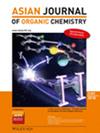基于数据驱动的化学计量模型预测磺化MXene薄膜纳米复合膜在海水淡化中的性能
IF 2.7
4区 化学
Q1 CHEMISTRY, ORGANIC
引用次数: 0
摘要
机器学习(ML)已经成为推进薄膜纳米复合材料(TFN)膜可持续水处理的重要工具。在这项研究中,开发了一种新的数据驱动的化学计量框架,结合ML来预测磺化mxene - TFN聚酰胺膜的性能,用于海水淡化应用。系统评价了核支持向量机(k-SVM)、决策树(DT)、长短期记忆(LSTM)、循环神经网络(RNN)、随机森林(RF)等6种机器学习算法,以及采用粒子群优化(k-SVM- pso)优化的混合k-SVM模型。磺化MXene浓度特征工程、膜特性如接触角、表面粗糙度、表面电荷和电解质的理化性质等对电解质通量和截留有显著的控制作用。基于TFN膜、磺化MXene和电解质的理化性质参数,meta启发式驱动k-SVM-PSO模型对电解质通量的预测精度为R2 = 0.983。预测机器学习算法在确定与有机污染物污染模式相关的非线性通量动力学方面也与实验数据集非常一致。此外,成功地预测了氯化TFN膜的光谱强度,其中DT和RF模型达到了最高的性能(R2 = 0.999,误差指标最小)。这种化学计量学方法能够对脱盐膜的性能进行高级预测。本文章由计算机程序翻译,如有差异,请以英文原文为准。

Data‐Driven Chemometric Modeling for Predicting the Performance of Sulfonated MXene Thin‐Film Nanocomposite Membranes in Desalination
Machine learning (ML) has emerged as a valuable tool in advancing thin‐film nanocomposite (TFN) membranes for sustainable water treatment. In this study, a novel data‐driven chemometric framework integrated with ML was developed to predict the performance of sulfonated MXene‐incorporated TFN polyamide membranes for desalination applications. Six ML algorithms namely kernel support vector machine (k‐SVM), decision tree (DT), long short‐term memory (LSTM), recurrent neural network (RNN), random forest (RF), and a hybrid k‐SVM model optimized using particle swarm optimization (k‐SVM‐PSO) were systematically evaluated. Feature engineering of sulfonated MXene concentration, membrane characteristics such as contact angle, surface roughness, surface charge, and physiochemical properties of electrolytes showed prominent control in electrolyte flux and rejection. The metaheuristic‐driven k‐SVM‐PSO model showed outstanding predicted accuracy for electrolyte flux with R2 = 0.983, based on physicochemical properties parameters of TFN membrane and sulfonated MXene and electrolytes. Predictive ML algorithms also strongly agreed with the experimental dataset in determining non‐linear flux dynamics related to organic foulants fouling patterns. Furthermore, the spectral intensity of chlorinated TFN membranes was successfully predicted, with DT and RF models achieving the highest performance (R2 = 0.999 and minimal error metrics). This chemometric approach enables advanced prediction of membrane performance for desalination.
求助全文
通过发布文献求助,成功后即可免费获取论文全文。
去求助
来源期刊

Asian Journal of Organic Chemistry
CHEMISTRY, ORGANIC-
CiteScore
4.70
自引率
3.70%
发文量
372
期刊介绍:
Organic chemistry is the fundamental science that stands at the heart of chemistry, biology, and materials science. Research in these areas is vigorous and truly international, with three major regions making almost equal contributions: America, Europe and Asia. Asia now has its own top international organic chemistry journal—the Asian Journal of Organic Chemistry (AsianJOC)
The AsianJOC is designed to be a top-ranked international research journal and publishes primary research as well as critical secondary information from authors across the world. The journal covers organic chemistry in its entirety. Authors and readers come from academia, the chemical industry, and government laboratories.
 求助内容:
求助内容: 应助结果提醒方式:
应助结果提醒方式:


